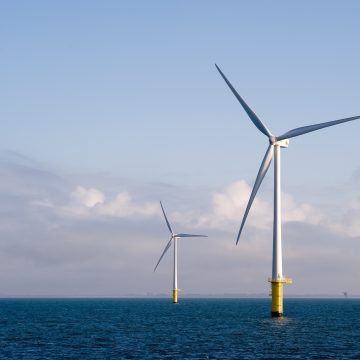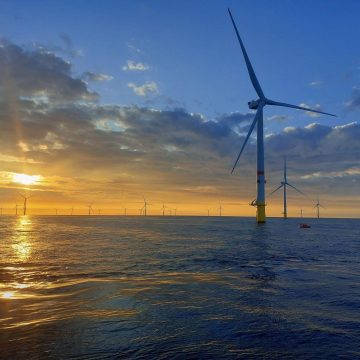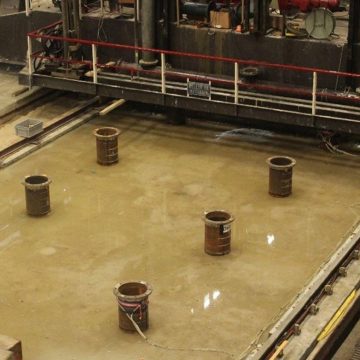New pile installation method for offshore wind monopiles
Monopiles are one of the most common foundation designs in offshore wind construction due to their ease of installation in shallow to medium depths of water. The dominant method used to drive monopiles into the seabed is the so-called hydraulic impact piling (hammering). The main disadvantages of this technique are the noise levels emitted during pile driving, and the high impact loads on the monopiles induced by the hammer hits. Without changes to the current applied pile installation method the expenses on noise reduction measures will increase and a firmer and heavier design of the monopile may be required to allow for the induced impact loads. A new technique, Gentle Driving of Piles (GDP) is being developed with which the monopiles can be installed with less noise.
GDP installation technique uses low and high frequency vibrations and has been tested at the Maasvlakte II in Rotterdam. During field trials, the new GDP method was compared with traditional techniques, such as pile driving and vibration. Sensors on the pole and in the ground recorded many data vibrations. Lateral carrying capacity was also measured. Thanks to this data, the researchers can refine the prediction models with which the offshore wind industry protects the impact of an installation and measures.
The field tests are part of the GDP research project that aims to develop a novel pile driving technique that simultaneously improves drivability, reduces noise emission, and ensures that the soil bearing capacity is uncompromised. In this experimental campaign that was executed from October to December 2019, the newly developed GDP shaker has been tested and compared to traditional vibratory and impact hammers. In total, eight piles were installed of which four were driven with the GDP shaker, three by impact hammering and one by vibratory driving. The responses of piles and the surrounding soil were continuously monitored during pile installations, using advanced electromechanical sensors and fibre optics. At the end of this year the field test finishes and the piles will be removed.
You have not yet indicated whether you want to accept or reject cookies. This means that this element cannot be displayed.
Or go directly to:
New prediction tools
The installed piles will be laterally loaded and the behavior of piles and the soil around the piles are monitored. The highly instrumented pile and soil monitoring will provide a unique set of data which will be used to validate three new prediction tools. These numerical models will provide the required tools to be able to predict the drivability of offshore monopiles, the state of the soil during and after driving the piles and the noise generated during gentle driving of piles. Next step is the development of the GDP shaker in an offshore full-scale test and in different soil types.
Deltares contributes to different aspects of this research project and at different roles. The technical project management of the field experiments was led by Dr. Ahmed Elkadi. The geotechnical engineering aspects of pile and ground monitoring as well as geotechnical site investigation were done by Dr. Faraz S. Tehrani. And the numerical simulation of pile installation using the Material Point Method (MPM) will be done by Dr. Vahid Galavi.
Joint research program
GDP is a project within GROW, the joint research program in offshore wind that initiates research and accelerates innovations. Delft University of Technology is coordinating the project with the following project partners; Deltares, Boskalis, Cape Holland, DOT, Eneco, IHC IQIP, Innogy, Seaway7, Shell, SIF, TNO and Van Oord. This project is funded by RVO and supported by TKI Wind Op Zee.




